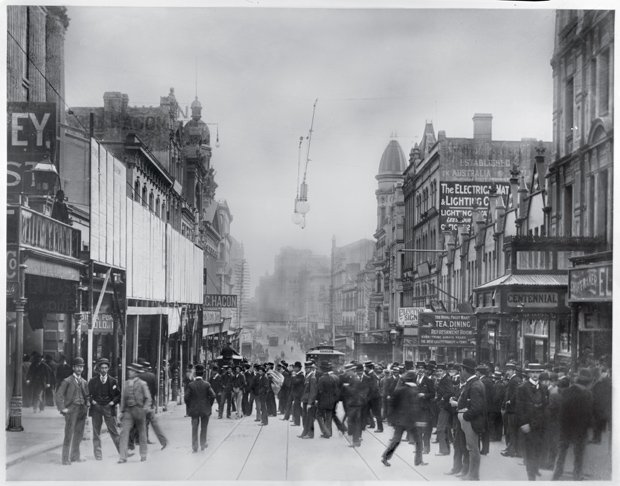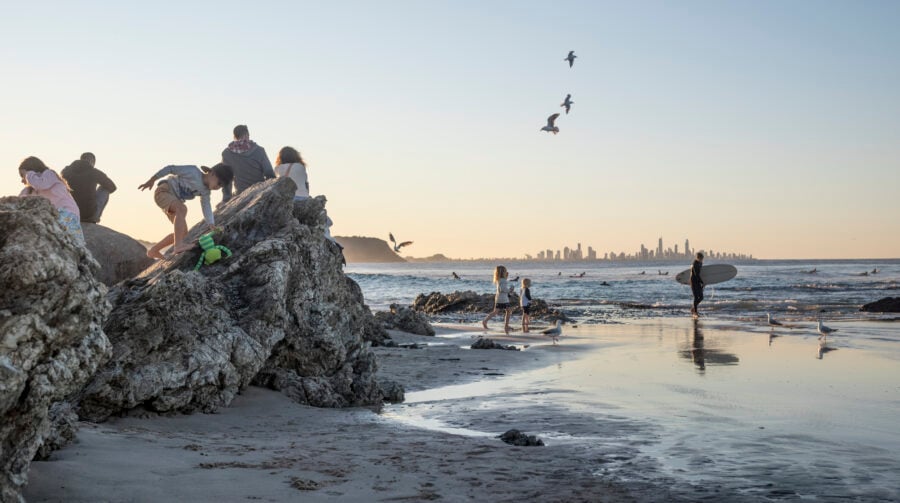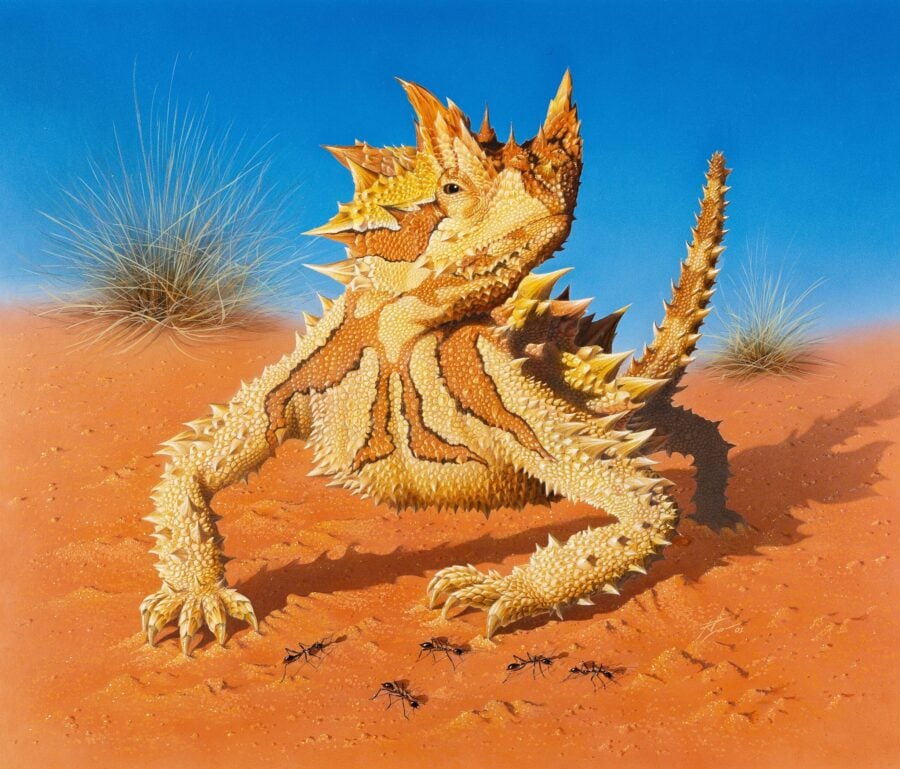History of Australia: A nation in the making

The massive output of Kerry and Co., Sydney’s largest and most prosperous photographic studio of the late 1800s and early 1900s, provides an intriguing glimpse of Australia at the dawn of the modern era.
Founded in 1884 by the photographer and entrepreneur Charles Kerry (1857-1928), the firm remained in business until 1917. After its demise, several thousand glass-plate photographic negatives – a mere fraction of Kerry and Co.’s vast photographic archive – were purchased by Sydney bookseller, art dealer and publisher James R. Tyrrell (1875-1961) of Castlereagh Street, with the intention of establishing a floating ethnographic museum moored on Sydney Harbour.
Tyrrell was a leading figure among local bibliophiles, an avid collector and student of Australiana, and an acquaintance of the likes of Henry Lawson, C.J. Dennis and Steele Rudd (Arthur Hoey Davis).
Also included in what came to be known as the Tyrrell Collection are the images of a number of unattributed photographers, and the work of Henry King, a prominent Sydney photographer who operated a rival studio to Kerry and Co. from 1880 onwards. Following King’s death in 1923, a collection of the photographer’s negatives were acquired by Kerry with 1334 eventually finding their way into James Tyrrell’s hands.
The total collection numbered about 7900 glass plates. Tyrrell’s grand museum plans never came to fruition, yet despite not developing the permanent home he intended for them, such timely acquisitions secured and safeguarded a unique collection of images of both rural and urban life and landscapes at a time of rapid change in the Australian scene.
In a less ambitious use of the photographs, Tyrrell produced several booklets of scenic views of New South Wales, but otherwise the collection remained safely tucked away for years at his final premises in Crows Nest, on Sydney’s North Shore.
Preserving Australia’s history
In 1980 the collection was sold to Australian Consolidated Press (ACP, publisher of Australian Geographic) by James Tyrrell’s grandson, Bill Tyrrell. Over the ensuing five years ACP sponsored the transfer of 2000 of the most significant and best preserved of the Tyrrell Collection negatives to 5×4 inch (12.7×10.2cm) plastic copy negatives, thus ensuring their preservation.
In 1985, 10 sets of prints from the select 2000 negatives were made, and the entire collection of glass plates was donated to the Powerhouse Museum, where it was placed in archival storage. ACP retained a set of the prints, while the remaining sets were presented to the state libraries in each capital city, the National Library in Canberra, the Macleay Museum at Sydney University, and the University of New England at Armidale.
According to the Powerhouse Museum, the collection at the time of its donation consisted of 7903 glass plates, plus 7916 contact-positive prints. About 90 per cent of the glass-negative collection consists of 10×8 inch (25.5×20.3cm) dry-plate negatives, most of which would have been used in the production of postcards. Of the negatives, nearly 500 were damaged, although only a small number were broken beyond use.
In addition to the Tyrrell Collection residing at the Powerhouse Museum, the Macleay Museum has a collection of approximately 3000 negatives originally from Charles Kerry’s studio. The National Library of Australia, and the state libraries of New South Wales and Victoria, hold miscellaneous albums and original prints from both Henry King and Kerry and Co.
Australia’s growing confidence
The images collected by James R. Tyrrell from the studios of Charles Kerry and Henry King provide a multifaceted portrait of an increasingly diverse and confident Australia, a nation metamorphosing from six separate colonies into a federated Commonwealth.
Most of the images are of New South Wales and cover everything from the bunting and brass of military parades, the pomp and formality of the latest vice-regal soiree or the bustle of a crowded and restless city, to a sentimentalised portrait of life in the bush where nature is subdued, the wilderness made productive, and honest toil rewarded.
Apart from the usual studio portraits found in the broader collection, and the sad accumulation of obligatory production-line photographs of fresh, young faces destined for the ridges of Gallipoli or the trenches of France and Flanders, ACP’s sample of the best of the images ranges over a number of broad themes that includes Sydney and its growing suburbs; the south coast, Blue Mountains and Kosciuszko; railways, trams, buses, ferries and ships; sport and leisure; farming, grazing, timber-getting, mining and prospecting; and the indigenous peoples of Australia and the Pacific.
Finally, it should be stressed that the Kerry and Co. images in the Tyrrell Collection are not the vision of any one photographic eye, but the work of a number of staff photographers, which included George Bell from 1893 to 1900, Harold Bradley from 1893 to 1911, Willem van der Velden from 1907 to ’11 and Charles Kerry himself. Together, they were responsible for a studio product where no individual credit was ever given.

A Nation in the Making: Australian at the dawn of the modern era – By Alasdair McGregor, published by Australian Geographic November 2011
The best of ACP’s collection of copy negatives of the Tyrrell Collection has now been turned into a magnificent anthology. Curated by Australian Geographic’s picture editor of 14 years Chrissie Goldrick, the carefully selected photographs have been reproduced to the highest possible standards to achieve pin-sharp detail and clarity. Each image is accompanied by Alasdair McGregor’s methodically researched and detailed captions.




